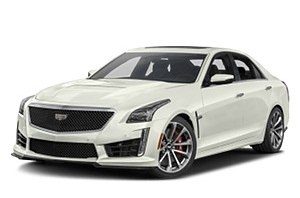
Used Daihatsu Sirion review: 1998-2005
The Daihatsu Sirion is a stylish, well-built Japanese hatchback with an excellent reputation for reliability and low maintenance.
It wasn't as successful as Daihatsu's big brother Charade in the new car market, but it's a hardy little beast and there's still plenty of it on the roads today.
They can be left on the road at minimal cost if you choose a good one, drive it properly and keep your maintenance schedule up to date.
Nearly every other small car manufacturer followed Daihatsu's lead two decades ago and now produces three-cylinder units.
The new Daihatsu Sirion launched here in April 2002 was significantly larger than the first generation model released in 1998. The second generation is the model to aim for as it has decent interior space and a decent size trunk for its car. grade.
Older models are probably best left to couples and singles, but the 2002 model can work as a family car if the kids aren't in their teens yet.
Daihatsu Sirion is well equipped for its age and class. It has air conditioning, a four-speaker stereo, power door mirrors, lap belts on all five seats with driver and front passenger airbags.
The Sirion Sport comes with alloy wheels, a front body kit including fog lights, a sportier taillight design, colored door handles and ABS brakes.
The first series of Daihatsu Sirion used an interesting three-cylinder 1.0-liter engine of the type that the Japanese brand has made famous for many years.
Indeed, almost every other small car manufacturer followed Daihatsu's lead two decades ago and now produces three-cylinder units.
In the 2002 Sirion, you get a 1.3-liter four-cylinder engine with two camshafts.
Transmission options are five-speed manual and four-speed automatic. Cars don't degrade performance as much as you might expect since the Sirion is relatively light.
Again, manual shifting is light and easy, so you won't have a hard time shifting gears yourself.
Management is competent, but not sporty. At everyday road speeds, there is a reasonably neutral feel, but understeer comes on too early. A good set of tires can give it a better feel and grip.
On the plus side, conventional handling cars are rarely bought by enthusiasts and are less likely to be wrecked.
Daihatsu has been under Toyota's control since the early 2000s after financial problems. Toyota Australia has spare parts in stock for most models under 10 years old.
However, it's wise to check with your local Toyota/Daihatsu dealer for parts availability before delving into the buying process.
Parts recyclers should also get a phone call from you.
Because it's a relatively small car, the Sirion doesn't have a lot of room under the hood, so it can be annoying to work with. Do not take on any security related issues unless you are an expert.
Repair manuals are available and recommended.
Insurance costs tend to be at the bottom of the scale. We don't know of any major company that charges extra for the Sirion Sport, probably because it's a clothing option and not a true sports model, but they might check it out if you're a young or inexperienced driver.
What to look for
Check for tears in the seats and damage to the floor and carpets in the trunk. Some wear and tear is expected from a car of this age, but too much could mean it has lived a pretty hard life.
Rust is rare, but if it does take root, it can go away very quickly due to Sirion's lightweight construction. Look into the lower parts of the body, as well as the lower edges of the doors and rear hatch.
Check the interior floor and trunk for rust. Repairs there can be expensive.
Look for signs of emergency repairs, properly done minor repairs are to be expected in older vehicles that spend a lot of time in the city/suburb, but if you think the Sirion has been in a major accident, see a professional. – standard cars can be dangerous.
The engine should start quickly, even when cold, and have a relatively smooth idle from the start. Four-cylinder engines are smoother than three-cylinder ones.
Check that there is no smoke from the exhaust pipe when the engine accelerates strongly after idling for more than 30 seconds.
All gear shifts should be light and easy, and the clutch needs very little effort to operate. If the clutch is heavy or sticky in operation, a major overhaul may be needed.
If the transmission stalls or crunches when downshifting quickly, costly problems can arise. The change from third to second usually suffers first.
Drive the car at low speed with the steering wheel fully locked in one direction and then in the other and listen for the click of worn universal joints.
Look for sun damage on the top of the dashboard and rear shelf.
Tips for buying a car:
Merchants often have monthly targets and bonus schemes, and may be looking to get a better deal as the end of the month nears.
